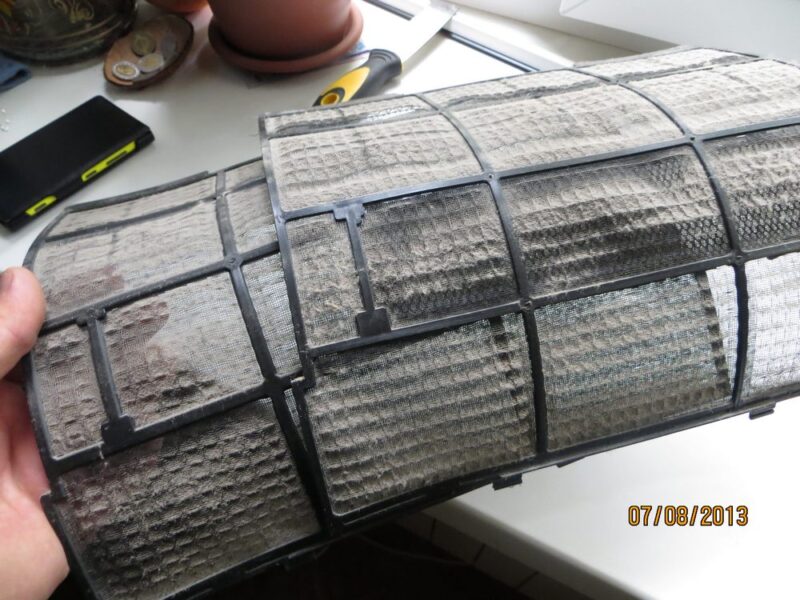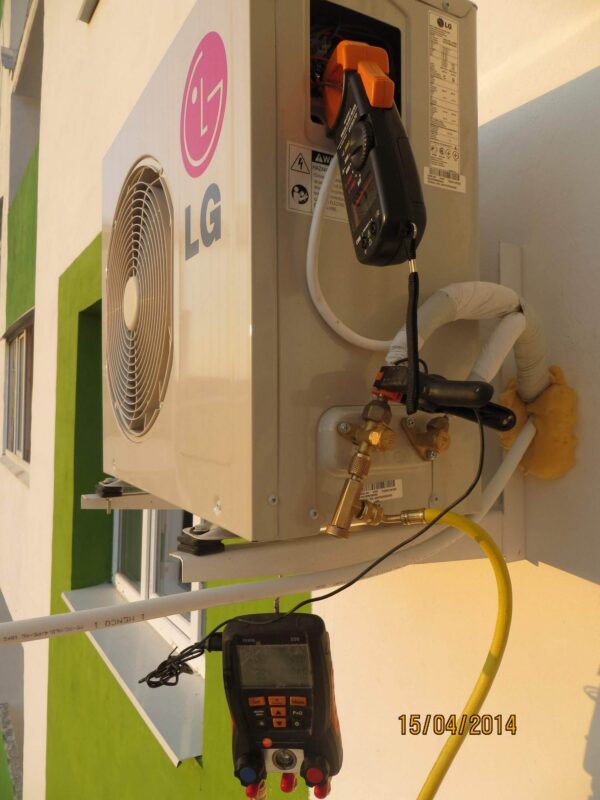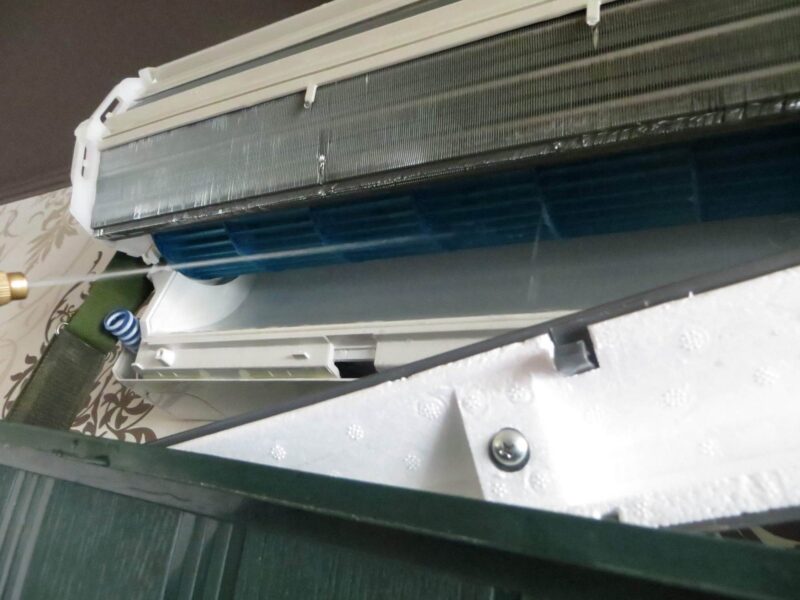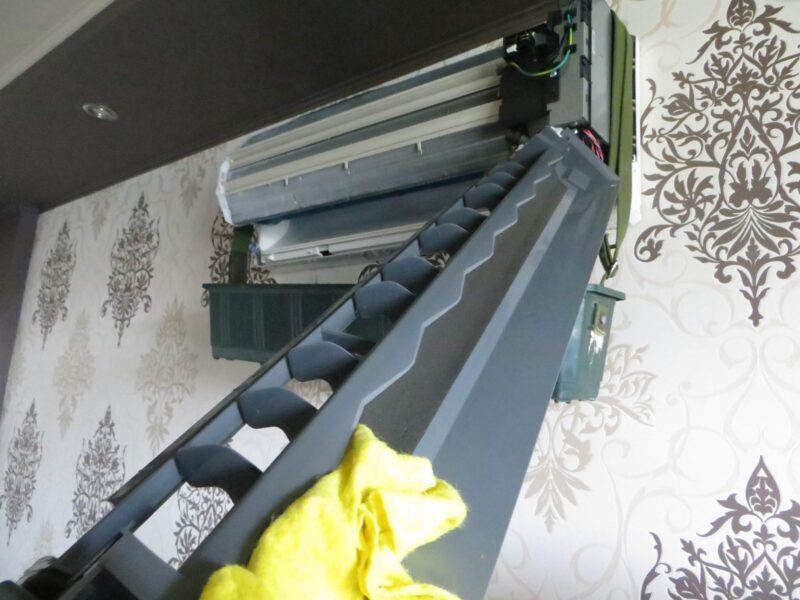FAQ
Installing air conditioning in a block of flats - Do I need a permit?
Before choosing a particular device, it is advisable to ascertain whether its installation in the location you are planning will be possible at all and, if so, what requirements it will have to meet.
It will be necessary to adopt an appropriate resolution by the cooperative, which will determine where the installation of the device is possible.
On the basis of the adopted resolution, the administration can grant permission for the installation of air conditioning. As you can guess, the whole process can take several months. The situation will turn out to be much simpler if the administrator has already gone through such a procedure in the past. So if you are not the first person to apply for the possibility of installing an air-conditioning unit, you have the chance to get approval within a few days or even a few hours.
In many cases, installing an air conditioner will prove either impossible or complicated. Owners of premises in historic buildings, for example, should forget about cooling their rooms in this way. Their enthusiasm will certainly be curbed by the conservation engineer.
No consent - What to do?
If the installation of the unit would infringe on the facade of the building, permission is usually not granted. On the other hand, there should not be a problem with placing an air-conditioning unit on a balcony, although here, too, there are usually various restrictions connected, among others, with the obligation not to exceed a certain noise level.
If you do not agree to an air-conditioning unit, it is best to start by talking – sometimes it is enough to present other arguments or a better presentation to make the resistance disappear.
If this does not help, the decision can be appealed under the terms of the Cooperative Law (Article 32) and the cooperative’s statutes.
Can I carry out my own service on the air conditioner?
The answer is – rather not, and if the air conditioner is under warranty – definitely not.
The user simply does not have the knowledge of the principles of refrigeration operation and the necessary experience to undertake this kind of action. Any attempt to get into the components of the unit will most often end up damaging them. It is better to leave this job to a professional – it will come out faster, better and cheaper.
The only thing we recommend that you do yourself is to clean the mesh filters. This can be done e.g. once a month, without waiting for a service technician. It is a simple matter – the filters are located under the front panel and are easily removed. Simply clean the collected dust with a brush and rinse with clean water. You can additionally use a de-funging fluid or foam, which is used for car air-conditioning. Remember to rinse well with water – chemical residues may cause an unpleasant smell.
Are repairs carried out during the service?
No. Unless minor – such as changing batteries or something similar.
Standard service includes air conditioning cleaning and testing. Also, if necessary, we diagnose simple faults.
More advanced diagnosis requires more time, knowledge and tools. So, an additional charge is made for such a diagnosis.
Repairs usually require a lot of time, knowledge and tools. To this, the cost of materials and spare parts should be added.
Example application: ”air conditioner is cooling worse”. Air conditioning cleaning must be performed in order to diagnose correctly. After cleaning, we start diagnosing the fault and this is where the service ends. Most often, the air conditioner cools less well due to a lack of refrigerant. Such a repair can take anywhere from a few hours to several days. Of course, in this case a repair charge is levied, the amount depending on the time spent, the number of journeys, the cost of materials and spare parts.
How often should air conditioning service be done?
This depends on the conditions in which the unit operates and the manufacturer’s requirements.
1 time a year
Once a year, an air conditioner in the home or office can be serviced, provided it is not used much and only in cooling mode. This is generally the case for customers who are concerned about the efficiency of equipment not covered by the warranty. This frequency can also be applied to new units, if the manufacturer does not require servicing more than once a year. A “full” service is recommended in the autumn – September or October.
2 times a year
In spring (pre-season) and in autumn (post-season). It is recommended for discerning customers who care for both the efficiency of the unit and the purity of the air. It can be an air conditioner in the home or office, used in summer and winter (in heating mode).
Why so often? In summer, during active operation of the air conditioner, there is constant contact between dust and water, condensing on the exchanger in the indoor unit. This combination creates a very good environment inside the air conditioner for various types of fungi and bacteria.
The seasonal check-up in autumn is full/extended (longer than the spring check-up for this) but generally consists of a decent cleaning and de-fungalizing of all parts of the air conditioner, so that you don’t breathe in dangerous microbes for six months until the next service. This is especially important for allergy sufferers and children. It is best to perform the service in September-October.
The seasonal service in spring, after the winter shutdown, of course includes and air conditioning dehumidification, but generally consists of checking the efficiency of the equipment. It is a check-up, preparing the A/C for the hot season. Ideally, the service should be performed in April or May.
In addition, very often when buying an A/C unit, service every 6 months is a manufacturer’s requirement and the continuity of the warranty period depends on it.
At least twice a year and more often
Such frequent service is required for units that operate in harsh environments – e.g. shops, warehouses, production, hairdressing salons.
Another category is air conditioners operating in public places – hospitals, clinics, offices etc. In these cases, frequent and thorough cleaning is required.
In server rooms or machine rooms, on the other hand, in addition to cleaning, the faultlessness of the air conditioner is important. A delay in service and the resulting fault can lead to a breakdown of the server electronics, which will have a huge cost impact.
How often do you have to top up the air conditioning with refrogerant?
There is no such thing as periodically topping up the air conditioning system with refrigerant. If there is a lack of factor – this is a major malfunction, the repair of which needs a lot of time and the knowledge of the service technician.
You can’t just add factor – it’s against the law. The service company can get a large fine and the Technical Inspection Authority can cancel the F-gas certificate.
So, for example, it can take up to two days to repair a leak in a simple domestic splice.
First you have to diagnose the lack of gas – sometimes there are other faults with similar symptoms. Then find the leak (and this is the most difficult) and fix it. Next, a leak test is necessary – the system is filled with nitrogen remaining at high pressure for 24 hours. Only after the leak has been found can the air conditioner be filled with refrigerant.
With a good installation, all the refrigerant will remain in the system until the end of the air conditioner’s useful life. And this means that the air conditioner will not be exposed to the most serious and costly repairs. Because through the refrigerant with oil circulating in the system, the compressor (the most expensive part of the air conditioner) cools down and lubricates itself. So that it is not worth saving on the installation of an air conditioner, the work of a good professional costs money. You can even choose a cheaper unit and it will work reliably for 10-15 years with good installation. Conversely, you can buy top-of-the-range equipment and save on installation – you may find that in a year’s time the A/C is due for replacing.
What does the air conditioning service include?
Cleaning the indoor unit.
The first step is to clean all the components of the unit – filters, casing, fan, exchanger, louvres, condensate tray. Cleaning is performed with water and cleaning agents.
De-fumigation.
At this stage, all previously cleaned components should be treated with a de-fumigation agent. Special attention is focused on cleaning the exchanger and
This is where dust comes into contact with water and where most fungi collect.
If necessary, we use a steam generator. At a temperature of about 100ºC, most bacteria are killed.
Cleaning the outdoor unit.
The outdoor unit obviously does not need de-fumigation, but it is exposed to dust contamination from the street and also needs regular cleaning. A heavily soiled unit can cause serious breakdowns and result in the replacement of the entire air conditioner. To clean the housing, exchanger and fan, we use a special cleaner that can dissolve the strongest dirt.
Checking the refrigeration system for leaks.
It is also very important to check the refrigeration system (we check for leaks and the most important operating parameters).
Checking the correct operation of the unit.
At this stage, we check the air conditioner in its various modes, its efficiency, check the condensate drainage system and electrical connections.
When is better to do air conditioning service - autumn or spring?
If the device is only used in summer – definitely in autumn!
Why? When operating the air conditioner in summer cooling mode, condensate forms on the exchanger of the indoor unit, which collects in the condensate tray and is then discharged outside the building or into the sewerage system. This, combined with the high ambient temperature, creates the perfect conditions for the proliferation of microbes and fungi.
This is why a full service is carried out on the unit in autumn – above all, a thorough cleaning and de-fungification is carried out.
We also recommend a spring service, which generally consists of preparing the unit for the season, i.e. checking the correct operation of the various modes or checking the proper functioning of the condensate drainage system. In addition, of course, we carry out – although not as extensively – de-fumigation of filters, the exchanger of the indoor unit and the condensate drainage system.
What about service if the air conditioner is used all year round?
In this case, we recommend a full service in autumn and spring – preferably in September/October and April/May.










